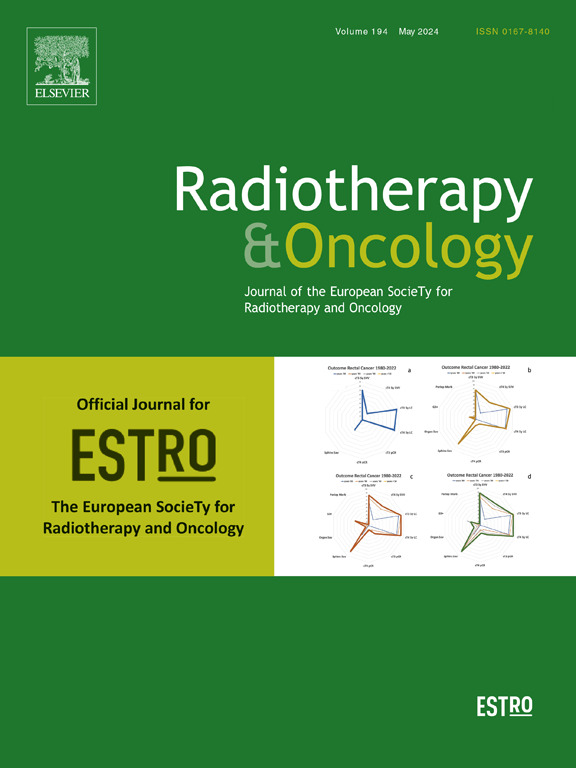Effects of dopamine receptor antagonists and radiation on mouse neural stem/progenitor cells
IF 5.3
1区 医学
Q1 ONCOLOGY
引用次数: 0
Abstract
Background
Dopamine receptor antagonists have recently been identified as potential anti-cancer agents in combination with radiation, and a first drug of this class is in clinical trials against pediatric glioma. Radiotherapy causes cognitive impairment primarily by eliminating neural stem/progenitor cells and subsequent loss of neurogenesis, along with inducing inflammation, vascular damage, and synaptic alterations. Here, we tested the combined effects of dopamine receptor antagonists and radiation on neural stem/progenitor cells.
Methods
Using transgenic mice that report the presence of neural stem/progenitor cells through Nestin promoter-driven expression of EGFP, the effects of dopamine receptor antagonists alone or in combination with radiation on neural stem/progenitor cells were assessed in sphere-formation assays, extreme limiting dilution assays, flow cytometry and real-time PCR in vitro and in vivo in both sexes.
Results
We report that hydroxyzine and trifluoperazine exhibited sex-dependent effects on murine newborn neural stem/progenitor cells in vitro. In contrast, amisulpride, nemonapride, and quetiapine, when combined with radiation, significantly increased the number of neural stem/progenitor cells in both sexes. In vivo, trifluoperazine showed sex-dependent effects on adult neural stem/progenitor cells, while amisulpride demonstrated significant effects in both sexes. Further, amisulpride increased sphere forming capacity and stem cell frequency in both sexes when compared to controls.
Conclusion
We conclude that a therapeutic window for dopamine receptor antagonists in combination with radiation potentially exists, making it a novel combination therapy against glioblastoma. Normal tissue toxicity following this treatment scheme likely differs depending on age and sex and should be taken into consideration when designing clinical trials.
多巴胺受体拮抗剂和辐射对小鼠神经干/祖细胞的影响
背景:多巴胺受体拮抗剂最近被确定为与放疗联合使用的潜在抗癌药物,该类药物的第一种已进入针对小儿胶质瘤的临床试验阶段。放疗主要通过消除神经干/祖细胞和随后的神经发生损失,以及诱发炎症、血管损伤和突触改变而导致认知障碍。在此,我们测试了多巴胺受体拮抗剂和辐射对神经干/祖细胞的联合影响:方法:利用通过 Nestin 启动子驱动表达 EGFP 来报告神经干/祖细胞存在的转基因小鼠,通过球形成试验、极限稀释试验、流式细胞术和实时 PCR,在体外和体内评估了多巴胺受体拮抗剂单独或与辐射联合使用对神经干/祖细胞的影响:结果:我们报告说,羟嗪和三氟拉嗪在体外对小鼠新生神经干/祖细胞有性别依赖性影响。相反,氨磺必利、奈莫必利和喹硫平与辐射结合使用时,可显著增加雌雄神经干/祖细胞的数量。在体内,三氟拉嗪对成体神经干细胞/祖细胞的影响与性别有关,而氨磺必利则对两性都有显著影响。此外,与对照组相比,氨磺必利提高了两性的球体形成能力和干细胞频率:我们得出的结论是,多巴胺受体拮抗剂与放射线联合治疗可能存在治疗窗口,使其成为一种新型的胶质母细胞瘤联合疗法。采用这种治疗方案后,正常组织的毒性可能因年龄和性别而异,因此在设计临床试验时应加以考虑。
本文章由计算机程序翻译,如有差异,请以英文原文为准。
求助全文
约1分钟内获得全文
求助全文
来源期刊

Radiotherapy and Oncology
医学-核医学
CiteScore
10.30
自引率
10.50%
发文量
2445
审稿时长
45 days
期刊介绍:
Radiotherapy and Oncology publishes papers describing original research as well as review articles. It covers areas of interest relating to radiation oncology. This includes: clinical radiotherapy, combined modality treatment, translational studies, epidemiological outcomes, imaging, dosimetry, and radiation therapy planning, experimental work in radiobiology, chemobiology, hyperthermia and tumour biology, as well as data science in radiation oncology and physics aspects relevant to oncology.Papers on more general aspects of interest to the radiation oncologist including chemotherapy, surgery and immunology are also published.
 求助内容:
求助内容: 应助结果提醒方式:
应助结果提醒方式:


